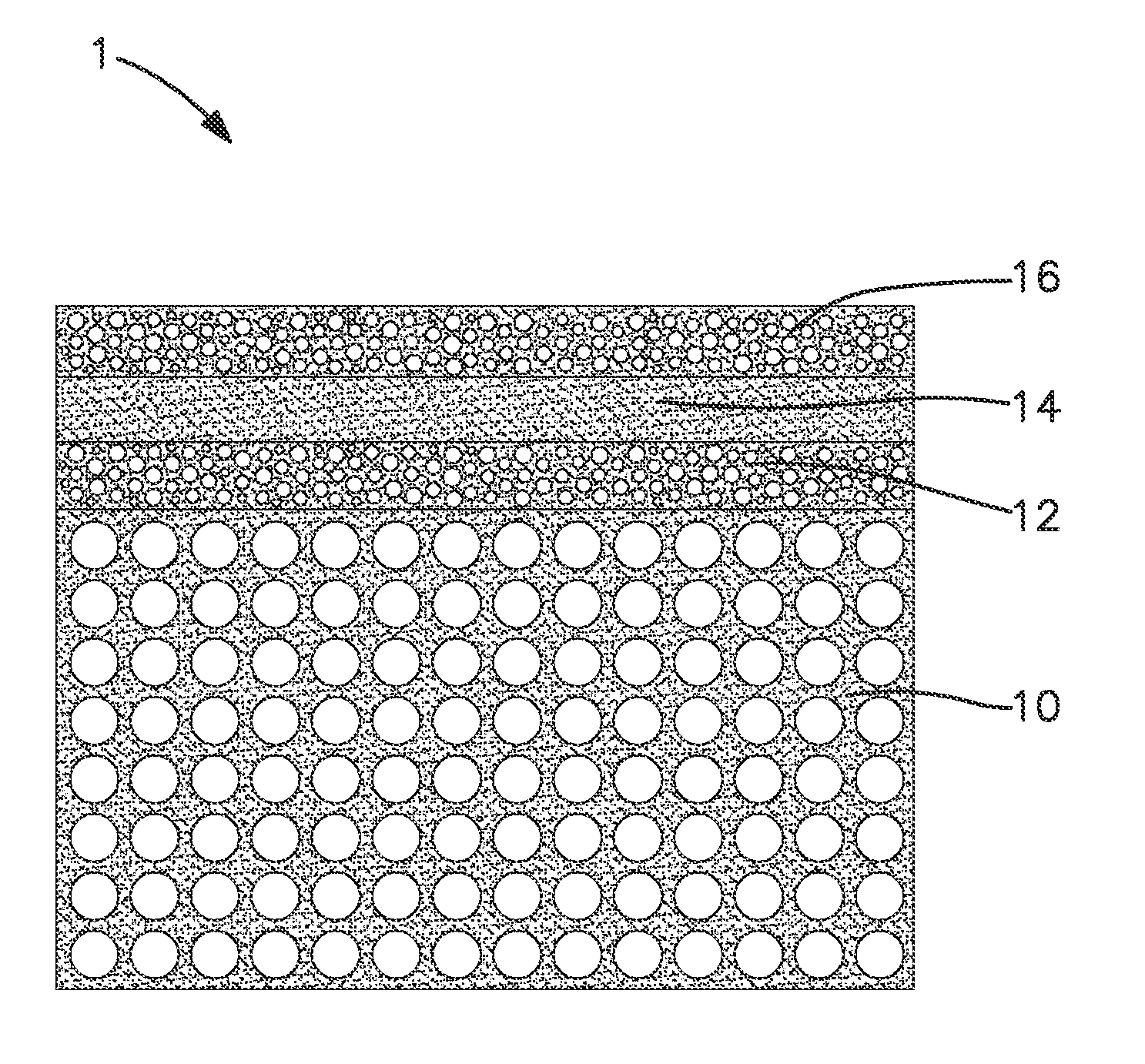Composite oxygen transport membrane
a technology of oxygen transport membrane and oxygen transport membrane, which is applied in the direction of pipes, preformed elements, inorganic chemistry, etc., can solve the problems of porous mass, and achieve the effect of reducing the cost involved, increasing the durability and life of the membran
- Summary
- Abstract
- Description
- Claims
- Application Information
AI Technical Summary
Benefits of technology
Problems solved by technology
Method used
Image
Examples
Embodiment Construction
[0019]With reference to the FIGURE, a sectional, schematic view of a composite oxygen transport membrane 1 is illustrated. Composite oxygen transport membrane 1 has a porous support layer 10. Applied to the porous support layer 10 is a first layer 12, a second layer 14 and a third layer 16. The composite oxygen transport membrane is specifically designed to function in an environment in which a fuel or other combustible substance is introduced to the porous support layer 10, on the side opposite to the first, second and third layer 12, 14 and 16, and subjected to combustion supported by permeated oxygen to both provide the partial pressure difference necessary to drive oxygen ion transport and also to heat the membrane to an operational temperature at which oxygen ion transport will occur. As such, the first layer 12, which, as will be discussed, may optionally include a combustion catalyst, serves as a porous fuel oxidation layer at which combustion of the fuel or other combustible...
PUM
| Property | Measurement | Unit |
|---|---|---|
| volume ratio | aaaaa | aaaaa |
| volume ratio | aaaaa | aaaaa |
| volume ratio | aaaaa | aaaaa |
Abstract
Description
Claims
Application Information
 Login to View More
Login to View More - R&D
- Intellectual Property
- Life Sciences
- Materials
- Tech Scout
- Unparalleled Data Quality
- Higher Quality Content
- 60% Fewer Hallucinations
Browse by: Latest US Patents, China's latest patents, Technical Efficacy Thesaurus, Application Domain, Technology Topic, Popular Technical Reports.
© 2025 PatSnap. All rights reserved.Legal|Privacy policy|Modern Slavery Act Transparency Statement|Sitemap|About US| Contact US: help@patsnap.com


